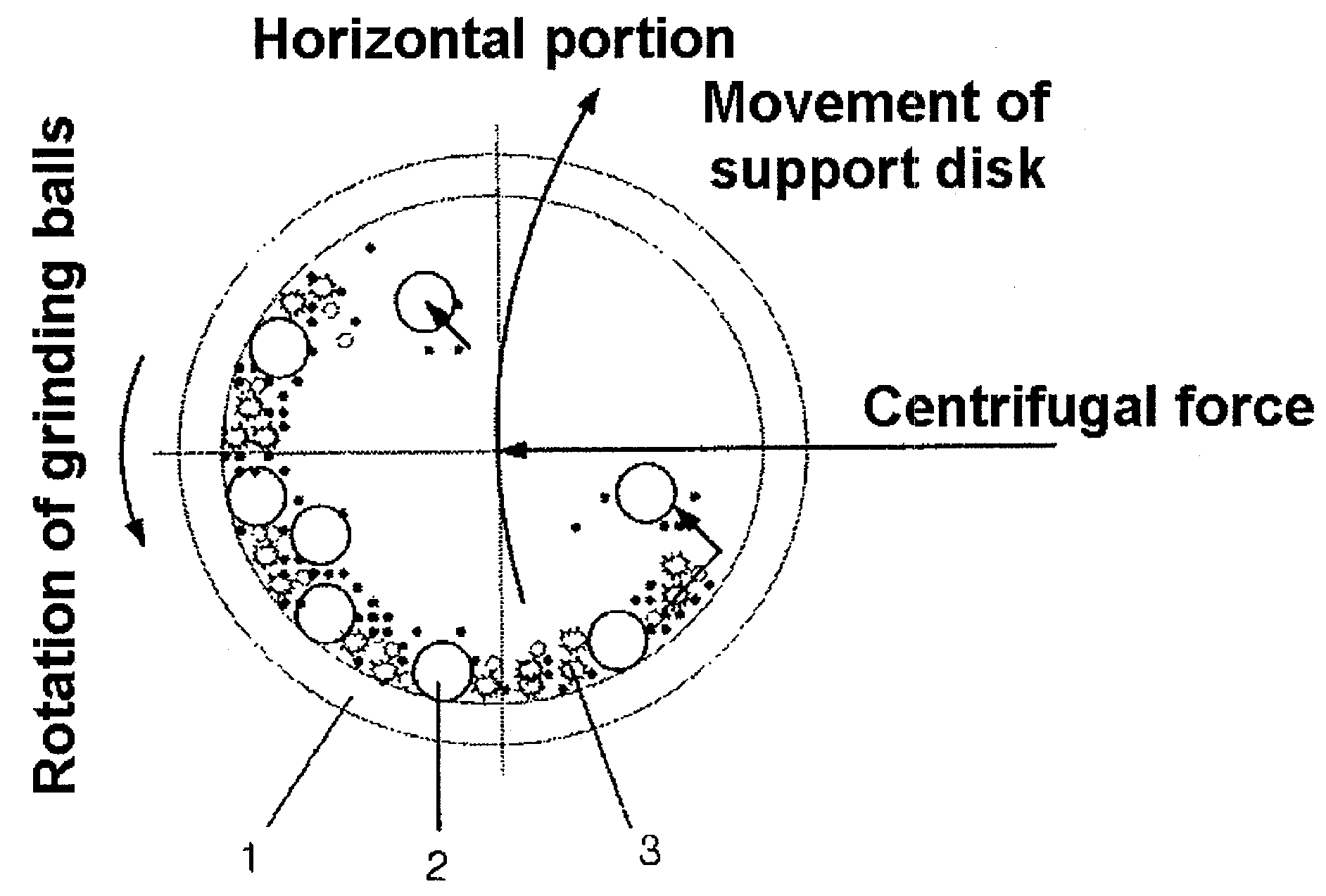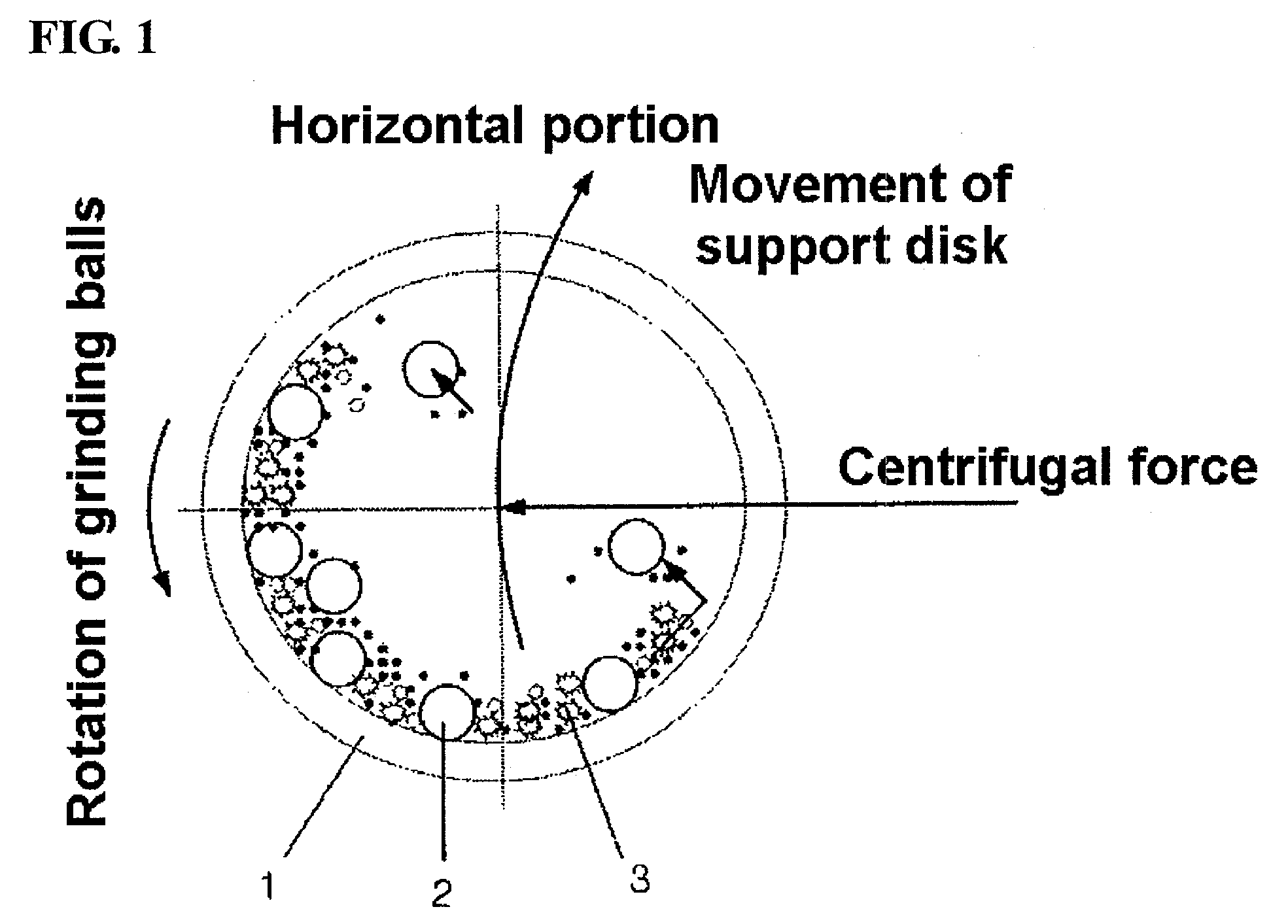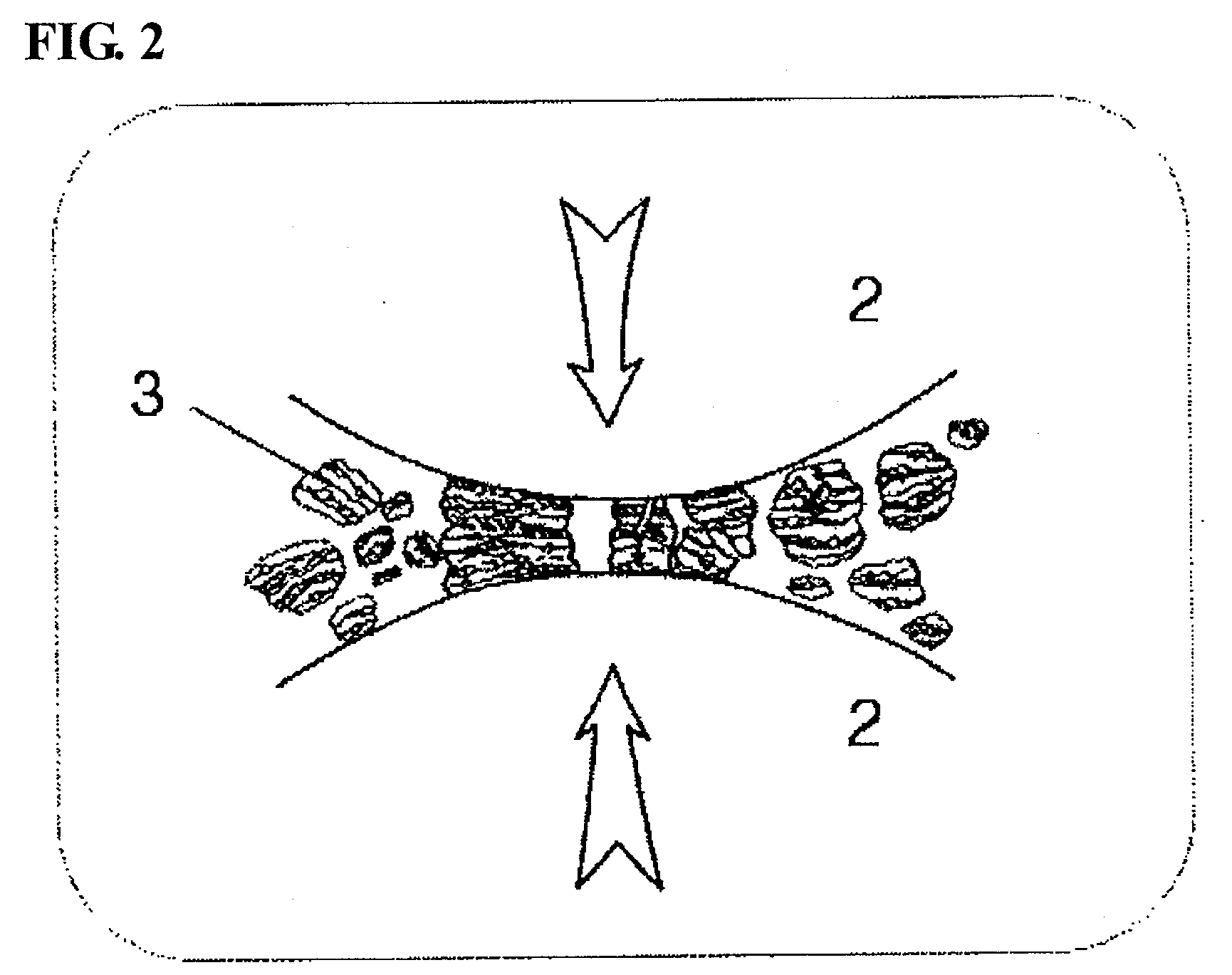Preparation Method of Vanadium/Titania-Based Catalyst Showing Excellent Nitrogen Oxide-Removal Performance at Wide Temperature Winow Through Introduction of Ball Milling, and Use Thereof
- Summary
- Abstract
- Description
- Claims
- Application Information
AI Technical Summary
Benefits of technology
Problems solved by technology
Method used
Image
Examples
example 1
[0087]In the catalyst preparation according to the present invention, the effect of the application of the ball milling process on NOx removal activity is considered to be very high. Thus, in order to observe the change in reaction activity and determine an optimal preparation method, catalysts were prepared using the TiO2 (A) support according to Preparation 1 and Inventive Preparations 1-3, and the prepared catalysts were subjected to NOx removal experiments at various reaction temperatures. The results of the comparison of NOx conversion between Preparation 1 and Inventive Preparations 1-3 are shown in FIG. 3. Herein, the temperature of a reactor was varied between 150° C. and 300° C., the concentration of supplied NOx was 800 ppm, and the NH3 / NOx molar ratio was 1.0. Also, the concentration of oxygen was maintained at 3 vol %, the concentration of water was maintained at 8 vol %, and the gas hourly space velocity was maintained at 60,000 hr+1. In order to eliminate the effect of...
example 2
[0092]The ball milling process, which is the primary characteristic of the present invention, is a process in which a combination of various parameters should be optimized. In this step, parameters, including the type and kind of milling, the speed and time of milling, the kind and size of balls, and the ratio of balls to powder, need to be considered. Such parameters are mutually adjusted. The effect of the parameters on the ball milling process needs to be considered, and when the high-activity denitrification catalyst prepared according to the present invention is applied in actual processes, mass production thereof will be required, and thus the analysis thereof is required.
[0093]In order to find the effect of BPMR (ball / powder weight ratio among the ball milling process parameters) on denitrification activity, catalysts were prepared using the TiO2 (D) support according to Comparative Preparation 1 while changing BPMR, and were measured with respect to NOx conversion rate at va...
example 3
[0098]The loading amount of vanadium as a catalytic active ingredient can have an effect on the increase in reaction activity through the ball milling of the present invention.
[0099]Generally, the activity of a selective reduction catalyst is greatly influenced by the content of vanadium as an active ingredient, and an increase in the vanadium content leads to an increase in activity, but when vanadium is loaded in an amount greater than a suitable amount, the catalytic activity can be decreased rather than being increased. Also, an increase in the vanadium content leads to an increase in the oxidation potential of the catalyst, and thus when sulfur dioxide is present in flue gas, NH4HSO4 and (NH4)SO4 salts are produced due to an increase in the oxidation potential of sulfur dioxide into sulfur trioxide.
[0100]In order to analyze the effect of the vanadium content and determine the optimal loading amount of vanadium in the preparation of a high-activity denitrification catalyst, cata...
PUM
| Property | Measurement | Unit |
|---|---|---|
| Temperature | aaaaa | aaaaa |
| Temperature | aaaaa | aaaaa |
| Fraction | aaaaa | aaaaa |
Abstract
Description
Claims
Application Information
 Login to View More
Login to View More - R&D
- Intellectual Property
- Life Sciences
- Materials
- Tech Scout
- Unparalleled Data Quality
- Higher Quality Content
- 60% Fewer Hallucinations
Browse by: Latest US Patents, China's latest patents, Technical Efficacy Thesaurus, Application Domain, Technology Topic, Popular Technical Reports.
© 2025 PatSnap. All rights reserved.Legal|Privacy policy|Modern Slavery Act Transparency Statement|Sitemap|About US| Contact US: help@patsnap.com



